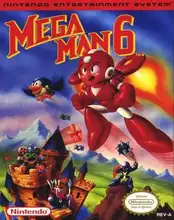Remember the pixelated worlds, the simple yet challenging gameplay, and the unforgettable chiptune soundtracks? That distinct feeling transports many of us back to a time when video games were just finding their footing, yet already creating timeless experiences. We're talking, of course, about the glorious age of 8-bit games.
This era, roughly spanning the early to late 1980s, wasn't just about lower resolution graphics; it was a foundational period that shaped the future of interactive entertainment. It gave us consoles like the Nintendo Entertainment System (NES), the Sega Master System, and countless home computer classics. But what was it about these limited systems that created such lasting magic?
What Defined the 8-Bit Era?
The constraints of 8-bit hardware forced developers to be incredibly creative. With limited color palettes, simple sprite designs, and basic sound capabilities, they had to focus on core gameplay mechanics and memorable design.
- Graphics: Pixels were large and visible, creating a distinct, blocky aesthetic. Character designs were often iconic despite their simplicity (think Mario, Link, or the Pac-Man ghosts). Backgrounds were functional but imaginative.
- Sound: The music and sound effects were generated by limited sound chips, resulting in the unique "chiptune" style. These melodies were catchy, repetitive, and designed to stick in your head – often becoming as iconic as the games themselves.
- Gameplay: Often characterized by side-scrolling, top-down views, or single-screen challenges. Controls were usually simple (directional pad, one or two buttons), but the difficulty could be punishingly high, demanding precision and practice.
Why We Still Love 8-Bit Games
Decades later, 8-bit games continue to resonate with gamers of all ages. For those who grew up with them, it's a powerful dose of nostalgia, recalling simpler times spent huddled around a CRT TV.
But it's more than just nostalgia. The fundamental design principles of the era still hold up:
- Pure Gameplay: With less focus on cinematic presentation, the emphasis was squarely on fun, challenging, and addictive gameplay loops.
- Clear Objectives: Levels and goals were often straightforward, making games easy to pick up, even if mastering them was tough.
- Iconic Characters & Worlds: Many franchises born in this era are still massive today, a testament to the strong foundations laid with just 8 bits.
Iconic Systems That Defined 8-Bit Gaming
While many systems existed, a few truly dominated the conversation around 8-bit games:
- Nintendo Entertainment System (NES): Arguably the most influential, it revitalized the home console market after the video game crash. Home to Super Mario Bros., The Legend of Zelda, Metroid, and countless others.
- Sega Master System: Sega's competitor offered impressive graphics for the time and hosted gems like Phantasy Star, Wonder Boy III: The Dragon's Trap, and its own versions of popular arcade titles.
- Various Home Computers: Machines like the Commodore 64, ZX Spectrum, and Apple II also had vast libraries of 8-bit games, contributing significantly to the era's diverse landscape.
How to Relive the 8-Bit Glory Today
Feeling that itch to revisit or discover classic 8-bit games? You're in luck! There are many ways to jump back in:
- Modern Mini-Consoles: Nintendo's NES Classic Edition and Sega's Genesis Mini (which includes some Master System titles) offer curated selections of games on hardware that looks like the original.
- Digital Stores: Platforms like GOG.com offer legally licensed collections and individual classic titles, often optimized for modern PCs.
- Emulation: Software like DOSBox (for PC classics) or dedicated console emulators allow you to play original ROMs (check local laws regarding ROM ownership). Websites like Archive.org also host many historical software titles playable directly in your browser.
- Modern Collections & Ports: Many classic games are available as ports or collections on modern consoles and mobile devices.
The Lasting Legacy of 8-Bit
The impact of 8-bit games is undeniable. They established genres, perfected control schemes, and proved that video games could be a mainstream form of entertainment. Modern indie games often pay homage to the 8-bit aesthetic, demonstrating its enduring appeal. The limitations of the past fostered innovation that still influences game design today.
Ready to Power Up?
Whether you're revisiting childhood favorites or exploring this pivotal era for the first time, diving into 8-bit games is a rewarding experience. The charm, the challenge, and the sheer fun packed into those limited bits continue to entertain and inspire. So grab a controller (or fire up an emulator) and experience where modern gaming truly began!
FAQ
Q: Are all 8-bit games difficult? A: Many are known for high difficulty due to limited lives, simple mechanics requiring precision, and lack of save features. However, some were more accessible.
Q: What's the difference between 8-bit and 16-bit? A: The "bit" refers to the processor's word size, affecting how much data it can handle. 16-bit systems (like the Super NES and Sega Genesis) offered more colors, complex sprites, better sound, and more sophisticated gameplay possibilities than their 8-bit predecessors.
Q: Where can I find legal copies of 8-bit games today? A: Look for official collections on modern consoles, digital stores like GOG.com, or check out mini-consoles like the NES Classic.
Q: Why do people still like the simple graphics? A: The pixel art has a unique aesthetic charm. It requires imagination to fill in the details, and the focus is often purely on gameplay rather than photorealism.

